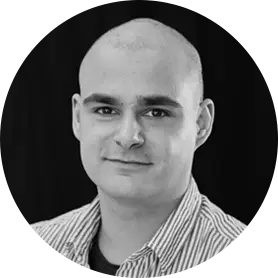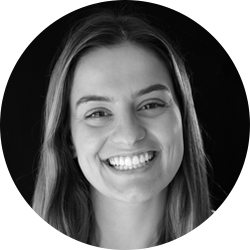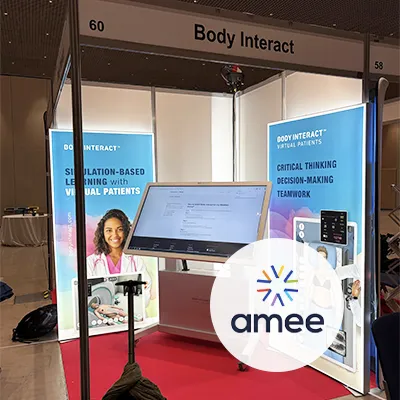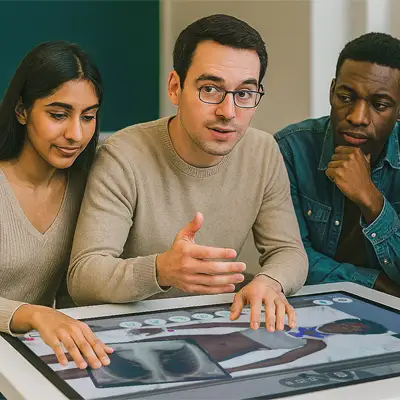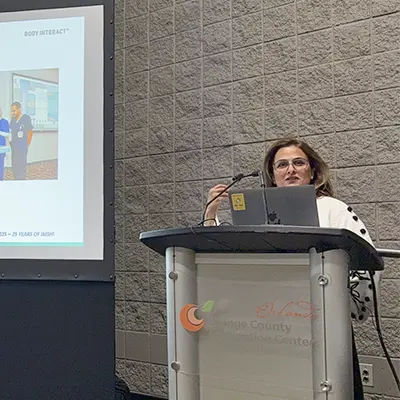Professor Eleonora Leopardi decided very early that she wanted to be a Doctor due to her strong commitment and interest in helping others. Today medical students are her focus and passion! She is in Australia as a Lecturer in Clinical Education at the University of Newcastle.
She believes there is something very precious in being available for someone, especially when they are going through a challenging time. Either with health problems or simply being in Medical School – “which is not easy at all” – commented the Doctor between smiles.
As an Educator of future healthcare professionals, she is very curious about the way the mind works. The cognitive side of the brain challenges her daily routine and enables her to fulfill this ideal and need for continuous learning.
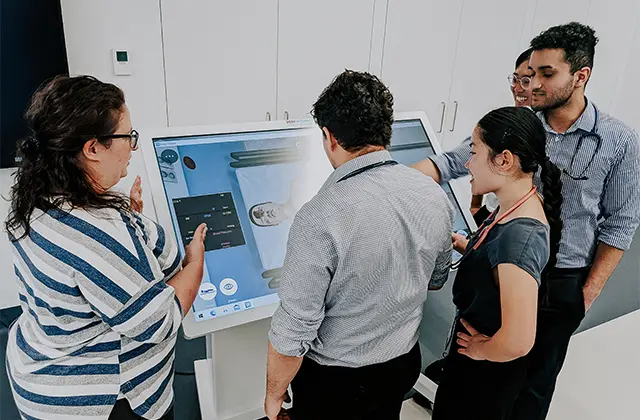
How can Virtual Patients benefit rural Medical Universities?
Australia is a vast land, meaning a percentage of the population lives isolated from the big centers, in rural or remote locations. The lack of medical care centers and professionals in those areas is thus one of the main challenges identified by the Australian health authorities.
The program that Nora´s University delivers focuses on training students to provide medical care to those in more isolated places. To do this, they establish rural clinical schools, where students learn from rural clinicians in their clerkships. Rural clinical schools are co-located with smaller regional hospitals, rather than tertiary care centers. Learning there is one of the best ways to promote and stimulate clinical skills development for students to understand how healthcare is delivered away from the main metropolitan areas. The key is ensuring all students are exposed to all the competencies they will need to learn to graduate, ensuring a balance between theory, simulation, and hands-on practice. With the implementation of Virtual Patient Simulation in those curricula, the school is able to provide standardized learning, practice, and clinical scenarios exposure. This ensures the same level of expertise, competence, and confidence to their learners no matter their background, clinical placement setting, or availability of supervisors.
Help in the transition to clinical placements and internships
In the opinion of Dr. Nora, one of the major benefits of introducing Virtual Patient Simulation in the learning program is that it encourages students to think for themselves when engaging in a clinical scenario. Working with the platform promotes classroom participation and discussion. Before the school implemented Body Interact, the students with more knowledge stood out from the others, and participated more. Naturally, they ended up being more interactive and dynamic in the class by answering most of the questions, while the other ones ended up just listening and having a more passive role.
Nora Leopardi’s students from the second-year cohort were extremely engaged with the virtual patient simulation session and wanted to use the simulator even more. Even though there are subjects that may seem a little boring, the simulator ends up making those areas more interesting. Studying a textbook or a guideline on a topic or having a simulator that offers a complete and practical introduction within the area is completely different, and of course, the second option encourages the student to learn and do better, commented the Lecturer.
The other cohort that learns using Body Interact is the 5th-year cohort. These students are in their final year and the Virtual Patient Simulator allows them to explore “making decisions for themselves and being responsible for their choices”, especially to understand the impact of it on the patient’s state and condition.
Decision-making can be stressful and scary to students, especially when it comes to assessments or when in a real hospital setting with a real patient. For this reason, the Doctor highlights the importance of combining individual practice with team interaction and other group debriefing strategies.
Implementing Virtual Patients in Clinical Education
Medical Education in Australia
Nowadays, Dr. Nora is responsible for first- and second-year students. Considered part of the prep years for clinical learning, the clinical skills curriculum in years 1 and 2 is designed to provide the basis/foundation for the future focus on communication and technical skills development. The University welcomes students from different backgrounds which also represents a great challenge to the educators. From those who already have experience in the healthcare area to those who have just finished High School with no specific expertise.
According to her knowledge and exchange of experiences between professionals, some Universities think that “it is too complex to use the simulator with the first-year students”. However, “there are basic concepts that this class needs to learn and Body Interact ends up enabling it in a more realistic, interactive and user-friendly way than other platforms”. For example, if we perform pulmonary auscultation, we are able to explore that, and depending on where students place the virtual stethoscope the sound comes out in different ways and with different intensities. Also, the students are able to identify any abnormalities such as crackles or wheeze.
Even comparing with the different digital and virtual tools and strategies that recent generations apply to learn and practice, no matter how many videos learners see on the Internet, it is “impossible to experience all the conditions except on a simulator”. “This makes our students able to put their knowledge into practice in a safe and controlled environment”, concluded the Doctor.
Productive Failure
The Positive Impact of Mistakes on Students’ Performance
According to Doctor Nora Leopardi, “Productive Failure” learning theory suggests that failure can have a positive impact on the student’s attitude and knowledge. With the support of an educator, failure indicates to the learners what, how, and why they have to change, improve, or continue when managing a patient.
For this reason, in the short term, the performance may not be immediately successful. Students can and will fail. But ultimately this provides for better learning in the longer term. The chance to repeat the Body Interact clinical scenarios, the importance of the debriefing after each performance, and developing case discussions with the class, are a few of the benefits listed by the lecturer, in accordance with the learning theory.
Nora Leopardi believes that Medicine is a fascinating discipline and there is always a constant stimulus to learn and not stagnate. Whether as a student, professional, or medical educator, it is important to have that notion and mindset.
“You will never learn everything there is to learn and that is ok”, commented the Australian Doctor. “You will keep learning”. To achieve happiness and satisfaction as current or future healthcare professionals, all learners need to “be able to deal with failure and be aware that humans are not robots, they are not perfect”.
& Emanuel Dinis – Marketing Curricular Internship
